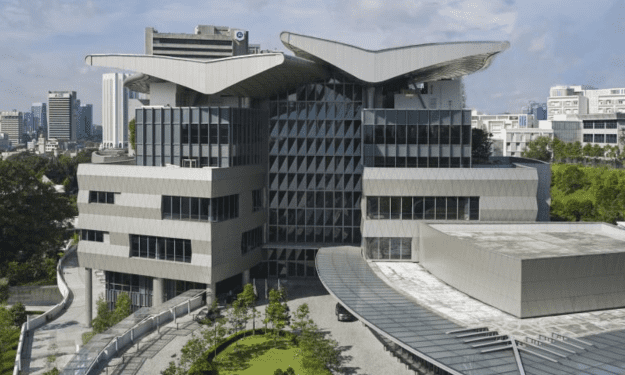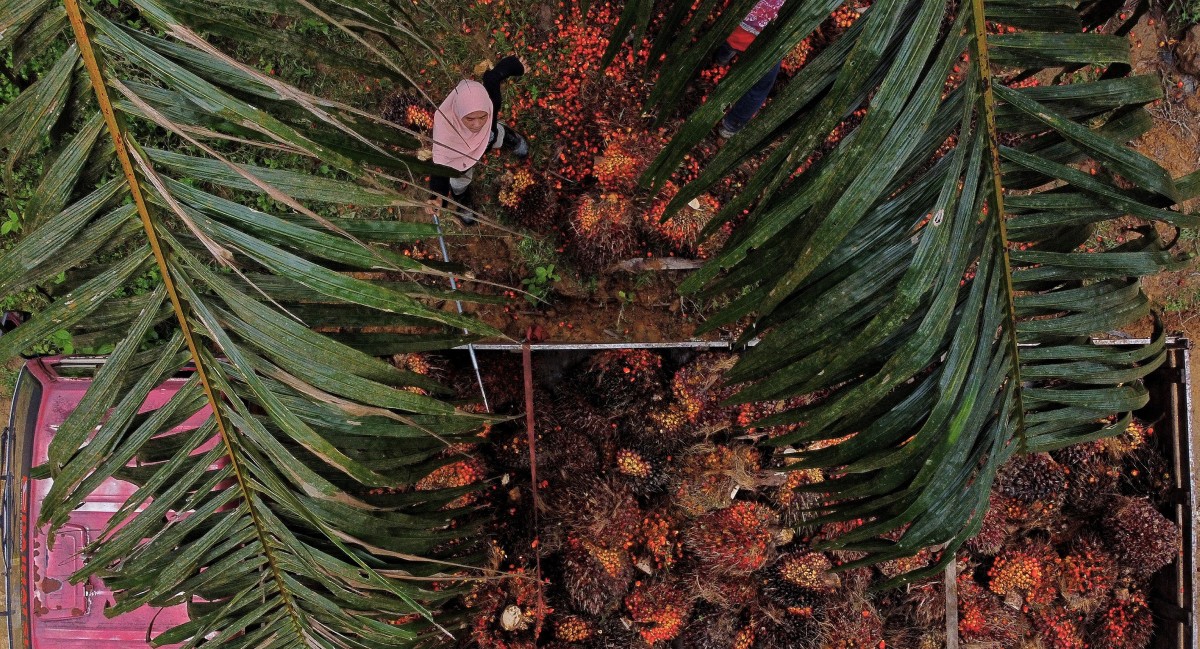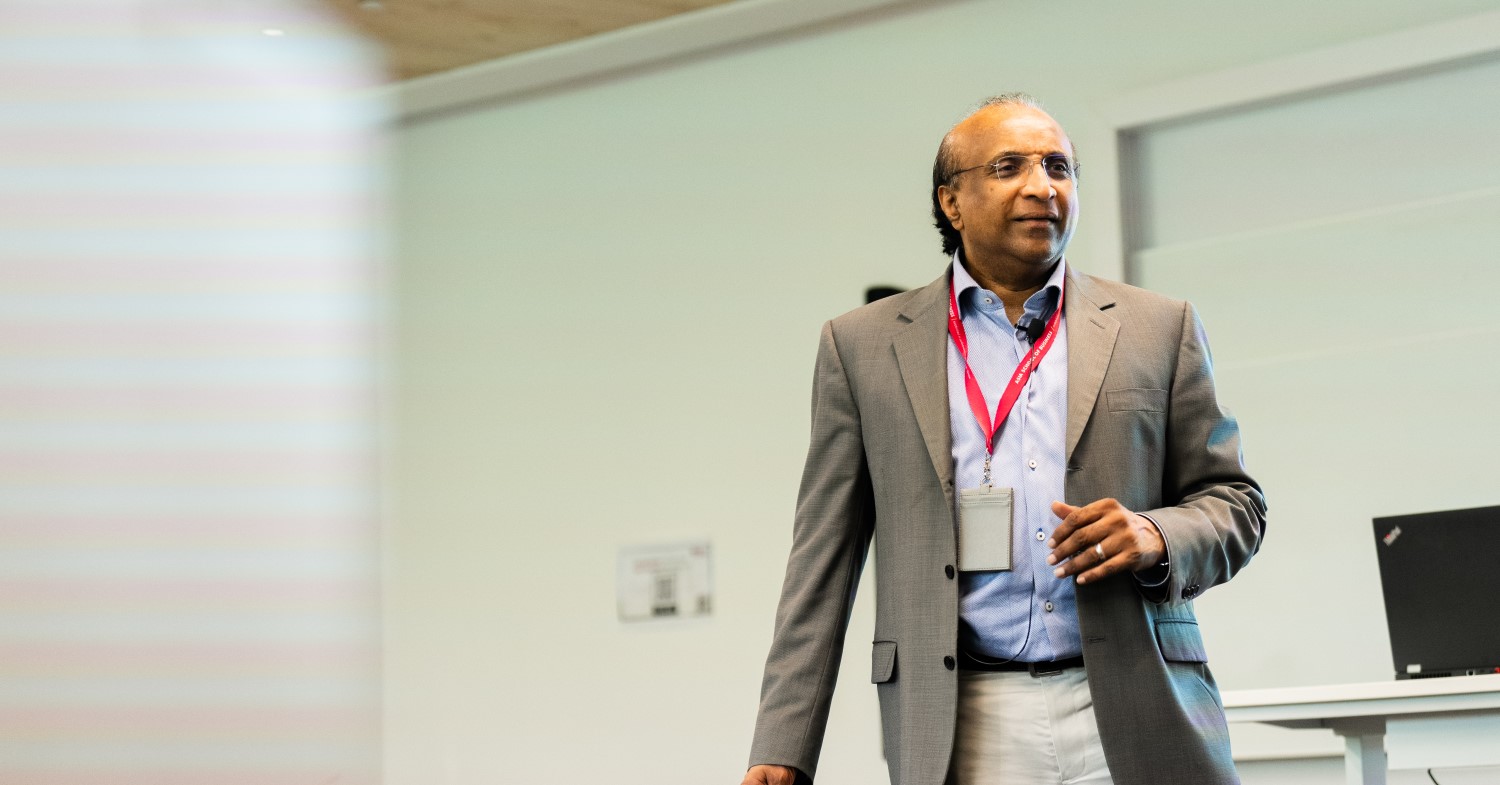Oleh Dr Pieter E. Stek dan Dr Asad Ata
Peraturan Pembasmian Hutan Kesatuan Eropah (EUDR) dan implikasinya terhadap minyak sawit Malaysia telah mencetuskan perdebatan hangat.
Daripada menyebelahi mana-mana pihak, adalah lebih produktif untuk menilai isu ini dari sudut penetapan piawaian.
Malaysia mempunyai sejarah yang panjang dalam membangunkan piawaian kelestarian sendiri untuk minyak sawit, dan menggabungkan pendekatan inovatif ini ke dalam EUDR boleh membuka jalan kepada strategi pelaksanaan yang kolaboratif dan saling menguntungkan.
Penetapan piawaian jarang mendapat perhatian umum, namun kesannya sangat meluas. Piawaian mengurangkan kos transaksi, mengukuhkan kepercayaan antara pembeli, dan mewujudkan padang permainan yang adil untuk
Ia memacu inovasi teknologi dan menyebarkan amalan terbaik. Lihat sahaja piawaian HACCP yang memastikan keselamatan makanan, piawaian emisi Euro 5 yang mengawal pencemaran kenderaan di Malaysia, atau pensijilan ISO yang menetapkan penanda aras dalam pelbagai industri.
Walaupun tidak sempurna, piawaian lazimnya mendorong kepada kecekapan dan pertumbuhan ekonomi.
Namun, proses penciptaan dan pelaksanaan piawaian tidaklah seobjektif yang disangka. Ia sering dikawal oleh sekumpulan kecil pakar teknikal yang keputusannya mungkin dipengaruhi oleh pemikiran berkumpulan atau pertimbangan politik.
Walaupun berpaksikan sains, piawaian juga dibentuk oleh dinamik kuasa kerana negara-negara memperjuangkan piawaian yang menguntungkan industri masing-masing.
Akibat tidak sengaja, khususnya terhadap golongan terpinggir, sering timbul daripada piawaian yang kelihatan baik niatnya.
EUDR ialah satu contoh yang relevan. Peraturan ini, yang kelihatan mudah, bertujuan menangani perubahan iklim dengan mengharamkan import barangan yang dikaitkan dengan penebangan hutan.
Niatnya murni: menangani punca ekonomi penebangan hutan. Namun, pelaksanaannya berisiko mengenepikan pekebun kecil di Malaysia yang memainkan peranan penting dalam rantaian bekalan minyak sawit negara.
Nasib Pekebun Kecil
Sektor minyak sawit Malaysia melibatkan kira-kira 250,000 pekebun kecil bebas. Rantaian bekalan mereka beroperasi melalui lapisan peraih yang mengumpulkan buah daripada pelbagai pekebun untuk dibekalkan ke kilang.
Sistem ini, walaupun dinamik, meluas dan sebahagian besarnya tidak formal, seringkali tidak telus.
Peraih mengutamakan kerahsiaan komersial, menyukarkan pengesanan sumber. Walaupun ladang besar boleh menunjukkan pematuhan kepada EUDR dengan lebih mudah, pekebun kecil menghadapi pelbagai halangan, meskipun mereka tidak secara langsung menyumbang kepada penebangan hutan.
Penyelidikan menunjukkan bahawa kebanyakan pekebun kecil tidak meluaskan tanah ke kawasan yang baru ditebang hutan, dan mereka sering mengurus tanah dengan kepelbagaian biologi yang lebih tinggi berbanding ladang berskala besar.
Namun, mereka bergelut dengan penyimpanan rekod dan pelaporan, terutamanya di kawasan pedalaman yang kurang akses kepada teknologi dan pendidikan.
Akibat tidak langsung EUDR adalah jelas: pekebun kecil berisiko disisihkan daripada rantaian bekalan bukan kerana pencemaran alam sekitar, tetapi disebabkan halangan sistemik.
Pensijilan MSPO
Menyedari keperluan kepada kelestarian yang inklusif, Malaysia memperkenalkan pensijilan Minyak Sawit Mampan Malaysia (MSPO) pada tahun 2015.
Tidak seperti piawaian Meja Bulat Minyak Sawit Lestari (RSPO) yang lebih ketat, MSPO direka bentuk agar boleh dicapai oleh pengeluar tempatan, terutamanya pekebun kecil.
Salah satu inovasi utama MSPO ialah pendekatan wilayah (territorial) terhadap pensijilan, dengan membahagikan negara kepada 162 Kluster Minyak Sawit Mampan (SPOC).
Setiap kluster mempunyai Sistem Kawalan Dalaman (ICS) untuk memantau dan menyokong pekebun kecil dalam kluster tersebut dan dikendalikan oleh Pengurus Kumpulan yang juga pegawai Tunjuk Ajar Nasihat Sawit (TUNAS), yang membantu petani mengamalkan amalan mampan.
Model ini mengalihkan fokus daripada pematuhan kepada pembangunan keupayaan. Secara prinsipnya, sistem SPOC juga boleh digunakan untuk memantau penebangan hutan, dan seterusnya membentuk laluan pematuhan kepada EUDR.
Sistem SPOC menyediakan rangka kerja yang inklusif, mengutamakan pendidikan dan penambahbaikan berperingkat berbanding pengasingan. Ia mengiktiraf bahawa kelestarian adalah satu perjalanan, bukan status binari.
Bagi pekebun kecil, pendekatan ini menawarkan laluan pensijilan yang lebih mudah tanpa menjejaskan mata pencarian mereka.
Pendekatan Wilayah yang Saksama
Malaysia harus memperjuangkan pendekatan wilayah, seperti SPOC, ketika merundingkan pelaksanaan EUDR. Dengan pendekatan wilayah bagi kawasan berisiko rendah dengan penebangan hutan minimum, pekebun kecil boleh dianggap patuh secara automatik.
Pendekatan wilayah ini munasabah berdasarkan struktur geografi penanaman sawit. Kilang minyak sawit hanya menerima buah dalam radius pengangkutan tertentu, kerana buah sawit perlu diproses dalam masa 24 jam.
Demi kepraktisan dan ekonomi, pengangkutan lebih daripada 50 hingga 100 km biasanya tidak berdaya maju, bergantung kepada kualiti infrastruktur.
Ini bermakna kilang yang jauh daripada kawasan penebangan hutan tidak mungkin menerima buah dari sumber tidak mampan. Pemantauan elektronik tambahan di jalan utama juga boleh mengelakkan kemungkinan berlakunya ketirisan.
Bagi kawasan berisiko tinggi atau pengeluar besar, model hibrid boleh dilaksanakan. Kawalan tambahan dan penyimpanan rekod akan dikenakan di mana perlu, dengan ancaman sekatan menyeluruh kawasan bertindak sebagai pencegah terhadap penebangan hutan haram.
Pendekatan setempat ini mengimbangi matlamat alam sekitar EUDR dengan realiti ekonomi petani kecil.
Pendekatan wilayah juga membuka peluang kolaborasi. Dengan membenarkan rundingan semula dan pengawalseliaan bersama, EUDR boleh menggabungkan kepakaran tempatan dan menangani cabaran di lapangan.
Sistem SPOC Malaysia sudah pun menawarkan rangka kerja berskala untuk pemantauan penebangan hutan dan pengesanan sumber. Dengan memanfaatkan infrastruktur sedia ada ini, EU boleh memastikan pematuhan tanpa menghukum pekebun kecil secara tidak seimbang.
Pengkritik mungkin berhujah bahawa pendekatan wilayah mengurangkan kebertanggungjawaban dan boleh mewujudkan gangguan pasaran. Namun, kebimbangan ini boleh ditangani melalui strategi berfasa.
Dari masa ke masa, sistem boleh beralih kepada pengesanan di peringkat ladang apabila teknologi dan keupayaan petani meningkat. Model hibrid ini memastikan tindakan segera sambil membina asas untuk kelestarian jangka panjang.
Yang penting, pematuhan wilayah mengiktiraf tanggungjawab bersama antara pengawal selia dan pengeluar. Ia selari dengan prinsip inklusiviti dan kesaksamaan, memastikan golongan terpinggir tidak terbeban secara tidak adil oleh piawaian yang direka di koridor birokrasi yang jauh.
Matlamat anti-penebangan hutan EUDR adalah terpuji, tetapi pelaksanaannya mesti disesuaikan dengan konteks tempatan yang pelbagai. Sistem SPOC Malaysia di bawah MSPO menawarkan rangka kerja kawal selia yang realistik.
Malaysianisasi EUDR
Dengan menerima pendekatan “Malaysianisasi” terhadap EUDR, EU boleh mengimbangi matlamat alam sekitar dengan pertimbangan praktikal, memastikan pekebun kecil kekal dalam rantaian bekalan global yang mampan.
Akhirnya, pendekatan berteraskan tempatan bukan sahaja mewujudkan piawaian yang lebih adil; ia juga memupuk kerjasama sebenar, mendorong pematuhan yang bermakna, dan menyokong kelestarian jangka panjang.
Pendekatan ini menunjukkan bagaimana penetapan piawaian boleh melangkaui kepakaran teknikal dan politik kuasa untuk mencipta penyelesaian yang benar-benar adil dan berkesan.
Dalam dunia yang saling berkait, kelestarian mestilah menjadi usaha bersama yang menghormati realiti tempatan sambil berusaha ke arah impak global. Malaysianisasi EUDR bukan sekadar seruan untuk peraturan yang lebih baik; ia adalah seruan untuk pendekatan kelestarian yang lebih inklusif dan saksama
Originally published by Bernama.














